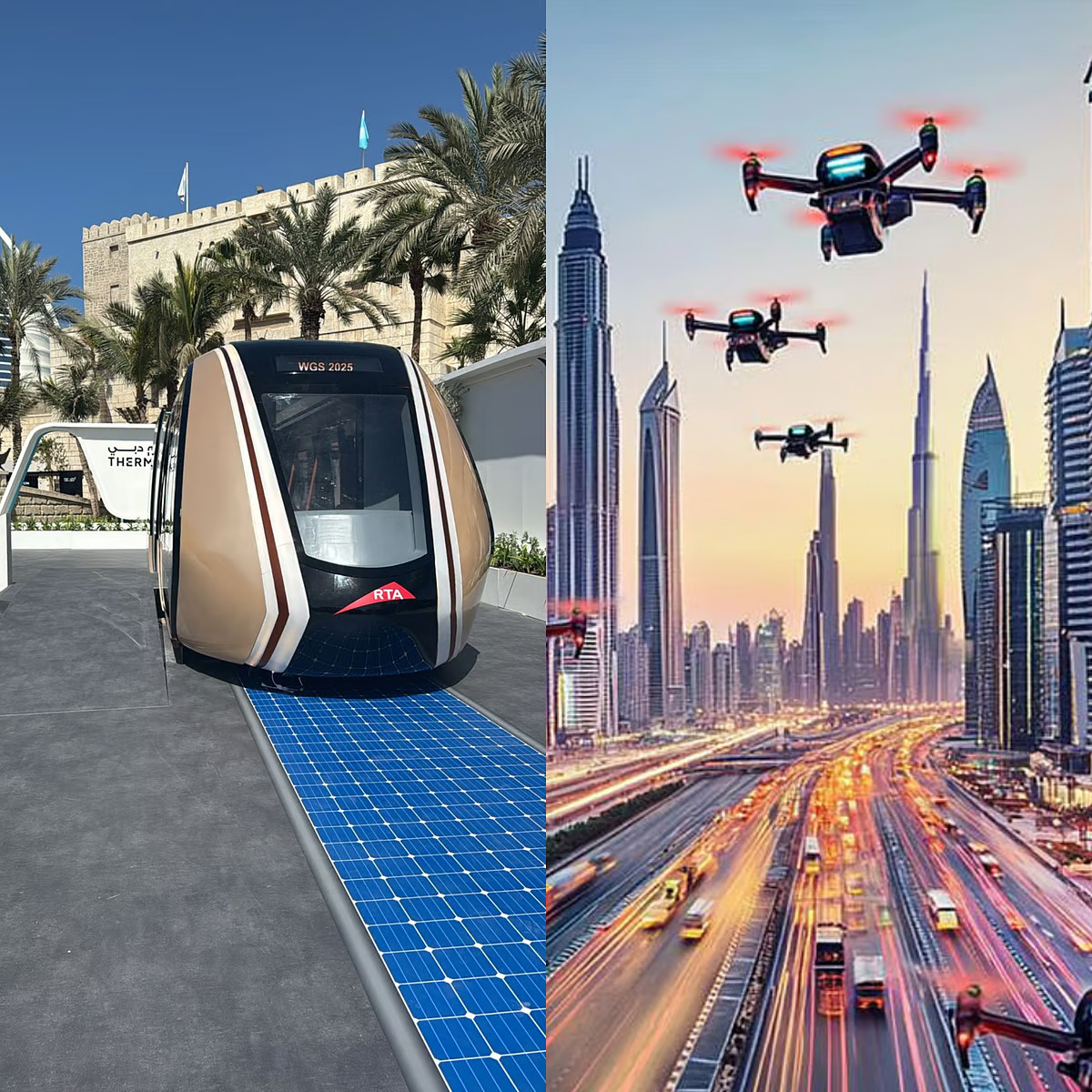DUBAI – Picture zooming past Dubai’s busiest areas, gliding over the water from Abu Dhabi to your office without breaking a sweat—this is the transportation innovation the UAE is aiming for the future.
The recently concluded World Governments Summit in Dubai unveiled groundbreaking transportation initiatives set to transform urban mobility for both residents and tourists.
The summit showcased cutting-edge solutions, from advanced tunnel infrastructure and solar-powered transit systems to air corridors for flying taxis and cargo drones. A fast and affordable vehicle with the speed of an aircraft and the accessibility of a boat is also part of the plan.
Here’s a look at the key innovations shaping the future of transportation in the UAE:
This groundbreaking autonomous, solar-powered transit system is still in development. The Rail Bus is a fully 3D-printed vehicle made from recyclable materials.
Designed for sustainability and efficiency, the Rail Bus features two rows of orange seats and space for disabled passengers, ensuring accessibility for all. Each carriage has 22 seats and can accommodate 40 passengers.
Operating on elevated tracks set to be built across the emirate, the system will provide frequent and flexible routing, seamlessly integrating with other public transport networks to enhance first and last-mile travel.
Capable of reaching speeds of up to 100kmph, the 2.9-metre high, 11.5.5 meter-long bus will run entirely on solar energy and function independently.
2. Seaglider
Combining the speed of an aircraft with the affordability and accessibility of a boat, the Seaglider offers a unique solution for fast, cost-effective travel.
Passengers will pay just $45 (Dh165) for a 12-seater ride between Abu Dhabi and Dubai Marina.
Seagliders are built to meet the same safety standards as modern aircraft and watercraft. They can operate on routes up to 300kmph using current battery technology, with the potential to extend to up to 800kmph once next-generation batteries are available.
The first commercial vehicles are expected to be delivered by late 2026 or early 2027.
3. Dubai Loop
This ambitious project, in partnership with Elon Musk, aims to connect the Dubai’s most densely populated areas through a cutting-edge tunnel infrastructure system.
Spanning over 17 kilometres with 11 stations, the Dubai Loop will have the capacity to transport 20,000 passengers per hour.
Designed for efficiency, the loop will allow travellers to reach their destinations directly, without stops in between. Powered by electric vehicles, it will operate at speeds of up to 160 kmph.
4. Corridor for flying taxis, cargo drones
The planned aerial routes will link key international airports and iconic landmarks across the UAE, facilitating seamless operations for piloted and autonomous air taxis and cargo drones while redefining the nation’s urban landscape.
Over the next 20 months, these aerial routes and regulations will be defined, paving the way for innovative transportation solutions for passenger and cargo transport, easing congestion on traditional road networks and enhance connectivity.
YAllA TV – www.yallatv.ae





